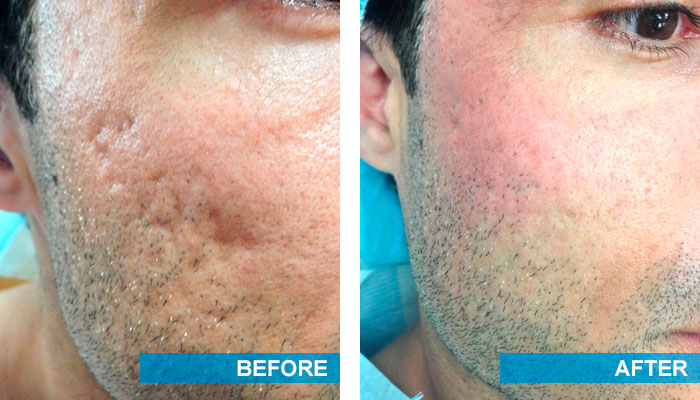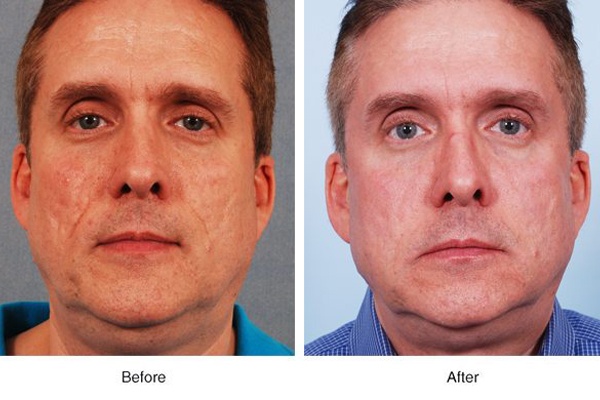Checking Out Skin Problems: Recognizing and Dealing With Acne Scars for Healthier Skin
Acne scars represent a substantial problem for individuals seeking to maintain healthy and balanced skin, as they can impact both look and self-worth. Recognizing the numerous kinds of marks, from atrophic to hypertrophic, is important for figuring out suitable treatment choices. While expert interventions like chemical peels and microneedling can be efficient, the value of customized treatment plans can not be overstated. Preventative steps play an important function in reducing future scarring. As we discover these elements, one must consider just how the ideal technique can result in transformative results.
Comprehending Acne Marks

The body's natural recovery process can lead to either atrophic marks, which show up as depressions in the skin, or hypertrophic scars, which are increased and arise from overflow of collagen. Additionally, the mental toll of acne marks should not be ignored; lots of people report sensations of embarrassment, stress and anxiety, and reduced self-worth. This psychological burden can affect social interactions and general high quality of life.
Addressing acne scars requires an extensive understanding of their formation and influence. Recognition of the possibility for lasting effects related to untreated scars can motivate individuals to seek suitable treatments. Early intervention and effective management techniques can substantially enhance skin appearance and enhance psychological durability, emphasizing the significance of understanding the complexities surrounding acne marks.
Kinds Of Acne Marks
Acne marks can be classified into unique kinds, each exhibiting one-of-a-kind attributes and calling for details therapy strategies. skin rejuvenation treatments. The key sorts of acne scars include atrophic, hypertrophic, and keloid marks

Hypertrophic scars, on the other hand, are elevated above the skin level and are the outcome of excessive collagen production throughout the recovery process. They typically continue to be within the limits of the initial acne sore. Keloid scars are similar yet expand beyond the original injury website, developing bigger, raised areas that can be agonizing or scratchy.
Understanding these sorts of scars is necessary for picking ideal treatment options. why not try these out Different scars may react far better to details therapies, such as laser treatments, fillers, or medical interventions, emphasizing the significance of a customized technique to acne mark monitoring.
Identifying Your Marks
Acne scars normally fall into 2 groups: atrophic and hypertrophic scars. These can additionally be identified right into ice-pick scars, boxcar scars, and rolling marks, each exhibiting distinct attributes and calling for various approaches for assessment.
Hypertrophic scars, on the other hand, are increased and happen due to excessive collagen production during the healing process. Acknowledging the certain attributes of your marks-- such as deepness, size, and texture-- is crucial for correct recognition (skin rejuvenation treatments). Additionally, take into consideration the circulation of marks across your skin, as this can indicate the severity and period of the acne problem
Involving with a skin specialist can supply useful insights into the nature of your marks, assisting in the distinction between various types. A thorough understanding of your marks will inevitably cause a much more tailored and effective treatment plan, making sure a clearer and healthier complexion.
Therapy Choices Available
Identifying the specific type of acne marks present on your skin lays the groundwork for discovering efficient treatment alternatives. Typical types of acne marks include atrophic (depressed), hypertrophic (elevated), and post-inflammatory erythema.
For atrophic scars, alternatives such as chemical peels, microneedling, and laser resurfacing are widely made use of. Chemical peels make use of acids to eliminate the external layer of skin, promoting brand-new cell growth.
Hypertrophic scars can be treated with corticosteroid injections to squash the mark or laser therapy to lower inflammation and boost appearance. Silicone gel sheets and stress dressings might also aid in managing increased marks.
In addition, dermal fillers can momentarily fill out anxieties from atrophic scars, while surgical excision might be suitable for extreme cases. Each treatment alternative has its factors to consider and advantages, making it necessary to speak with a skin doctor. They can provide customized referrals based upon the internet type and seriousness of your marks, along with your skin type and overall wellness.
Tips for Prevention
Effective avoidance approaches can dramatically lower the chance of creating acne marks. Utilizing non-comedogenic products aids prevent clogged pores, which can exacerbate acne.
Staying clear of need to pop or select acne sores is vital, as this can cause much deeper skin damage and increase the threat of scarring. Rather, think about using a cold compress or non-prescription therapies to decrease swelling look at this now and redness.
Sun security is another essential element of prevention; ultraviolet (UV) rays can dim scars and prevent the recovery process. Using a broad-spectrum sunscreen with at the very least SPF 30 daily can shield the skin and advertise even recovery.
Lastly, keeping a balanced diet abundant in minerals, antioxidants, and vitamins supports skin wellness and healing. Remaining hydrated and taking care of anxiety levels can likewise play a substantial function in minimizing acne flare-ups. By implementing these approaches, people can dramatically lessen their chances of developing acne scars.
Final Thought
In verdict, understanding and recognizing acne marks is vital for reliable therapy and accomplishing much healthier skin. Numerous types of acne scars, including hypertrophic and atrophic marks, demand particular treatments customized to individual demands.
The body's all-natural recovery process can result in either atrophic scars, which appear as clinical depressions in the skin, or hypertrophic scars, which are elevated and result from overproduction of collagen. They are more separated right into three subtypes: ice choice scars, boxcar marks, and rolling marks. Acne marks generally drop right into two categories: hypertrophic and atrophic scars. These can better be identified right into ice-pick scars, boxcar scars, and rolling marks, each showing distinct qualities and requiring different methods for evaluation.
Different kinds of acne marks, consisting of atrophic and hypertrophic marks, demand specific treatments customized to private needs.
Comments on “Leading Acne Treatment for Sensitive Skin: Mild Solutions for Clear Skin”